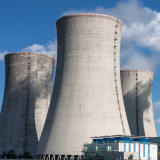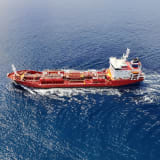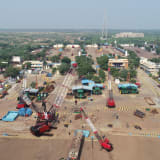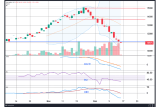
Before the issues surrounding its troubled domestic property sector started to surface, China has pivoted towards “industrial upgrading” to find a solution in maintaining its No. 1 spot in the manufacturing sector. This move has caused a big strain against the developed nations in the world, as a large part of this upgrade constitutes the production of sophisticated and high-value manufactured goods.
Incidentally, ship construction has fallen under this category. Shipbuilding nations – like Japan and South Korea – are directly impacted from increased competition as the nation places more attention to this business sector.
Despite having a 1.4 billion population, China cannot rely on its domestic support alone to meet the ever-increasing supply, especially as they move into its high-value goods manufacturing phase. They will need to continue to export their goods (vessels) more so than ever before to maintain its position as a global manufacturing powerhouse.
China has always dominated the market when it comes to construction of less sophisticated vessels including bulkers, containerships, over the past two decades. As with all manufactured goods, they have grown market share in ship construction with competitive cost and therefore, pricing. Japan, on the other hand, has maintained its dedication towards improving construction quality to justify premium pricing compared to its Chinese counterpart. However, we are witnessing this price to quality gap ratio to be gradually eroding over time, as quality improves in China and price increases in Japan due to rising costs.
As we start the year, major shipbuilders in Japan have started to enter into agreements with Japanese steel mills to steel plate pricing for the later part of the year. Steel prices have gone up significantly from the year before as the mills are struggling to maintain prices, due to rising procurement costs (resulting from high coal prices), and the depreciating yen. We believe that the higher cost will cause the price gap between Japanese built vessels and Chinese built vessels to widen further, particularly for the larger steel-intensive vessels.
The world’s shift towards sustainability that has resulted in upgrades in energy propulsion for vessels, has coincided with China’s push towards investing in new technology to serve its decarbonization goals.
In a short span of two to three years, they have pushed ahead and led the pack in terms of new vessel orders equipped with dual fuel propulsion. Whilst many would argue that they have the “capacity” to do so, we shouldn’t miss the big picture that the “capability” caught up much quicker than most would expect. Besides dual-fuel propulsion vessels, major Chinese shipbuilders have also begun to build a decent track record for sophisticated ships – including Gas Carriers (LNG/VLGC), product tankers and LCO2 carriers.
We believe that the impact of “industrial upgrading” in China is only beginning to show and should start to take off quickly as more vessels hit the waters.
Japan’s shipbuilding sector will continue to be tested in the coming years as pressure continues to mount from its growing neighbour who is seeking to diversify and upgrade its manufacturing base towards high value goods that include ships. Whilst the price gap pressure will not be much of a pressing issue in the medium term, thanks to a healthy market and robust newbuilding environment (due to the lack of berths), it will start to hurt only when things take a turn for the worse.
As we enter the next uncertain phase of answering what’s next for the world of ship construction in renewable energy, Japanese builders face an enormous task of producing answers, whilst recognizing that they have a neighbour who’s most likely going to be able to do it faster and cheaper.
By Eugene Quek, Partner & Head of Projects in Japan.
Articles
You may also be
interested in
View allGet in touch
Contact us today to find out how our expert team can support your business















